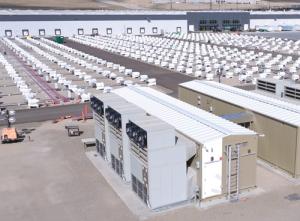Protecting Electricity Customers
Amory Lovins serves Stanford University as Adjunct Professor of Civil and Environmental Engineering (2020–24), Lecturer (2025– ), and Precourt Scholar, Precourt Institute for Energy. He is Cofounder and Chairman Emeritus, RMI (founded as Rocky Mountain Institute).
New artificial intelligence (AI) data centers pose important financial risks to investors and electricity customers. But following conservative economic principles can manage those risks and help both power executives and their regulators.

Data centers’ electricity usage, one-fourth for AI, is approaching five percent of total U.S. use. A few localities, notably two Virginia counties with the world’s densest cluster of data centers, report rapid growth in electricity demand, but that’s not yet a national trend.
Adjusted for weather and behind-the-meter generation, U.S. electricity use fell in 2023 as savings overwhelmed a one-tenth-percent rise from “explosive” data-center expansion. In 2024, total U.S. electricity use rose by only two percent, the fourth-biggest percentage in the past decade.
The International Energy Agency forecasts only one or two tenths of a percent higher annual growth in 2025 and 2026. The issue today is about forecasts, not observable reality. But thermal power plants take longer to build than data centers, so they must be bought first, risking regret.
Forecasting huge and rapid load growth to justify multi-billion-dollar investment decisions requires more rigor but gets less. For example, PJM’s 2026/27 Base Residual Auction’s five and a half gigawatts of load growth includes over four gigawatts from new data centers, costing power systems billions of dollars a year.

